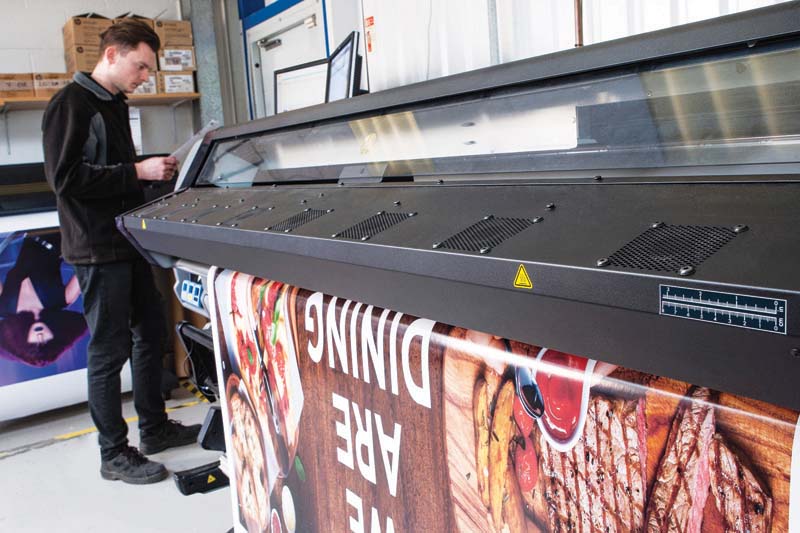
Wide-format digital inkjet printers require machine guards to keep operators safe.
Photo courtesy HP
Machine guarding, lockouts and tagouts
As mentioned, PSPs also face hazards relating to the machinery they use. It is important to implement machine guarding to prevent severe accidents for operators.
‘Lockout-tagout’ is a safety procedure that involves shutting off such machines and locking down power sources before performing any maintenance on them. The purpose is to prevent anyone else from accidentally starting up the machine, which could in turn harm the maintenance worker who is in direct contact with it.
Many newer machines for the wide-format printing industry come with ‘guard’ features built in. With older equipment that is not up to current regulatory standards, on the other hand, employers must ensure guards are added.
Wendy Nadan, an environment, health and safety (EHS) consultant based in Kitchener, Ont., discussed the importance of lockout procedures in preventing workplace injuries. Her presentation featured an outline of employers’ responsibilities, which include not only making sure the right equipment is installed, but also training employees in the proper use of machinery and providing PPE for them. She reviewed different types of machine guards that are available and how to maintain them.
“Even if the guard came with the equipment, you still need to make sure it’s on and working,” she said. “If any moving part is not guarded and there’s an accident, you’re liable.”
All operator stations must have emergency-stop (e-stop) switches. Any components added to them must have redundant circuits, as the system cannot rely on one wire to work. And operators may not disable or bypass safety switches, no matter how aggravating dealing with them may be.
“There’s always a trade-off between safety and operability,” Nadan said. “Guards block both visual and physical access to prevent operators from coming into contact with points of danger. They need to be put back in place after maintenance.”
Operating her own business, Nadan Consulting, she continues to work with SGIA, having previous experience with the Photo Marketing Association International (PMA) and the Ontario Printing & Imaging Association (OPIA), both of which have been succeeded by the Imaging Alliance. Over that period, Nadan has seen printing equipment evolve, including the related safety precautions.
“There are even ‘light curtains’ today that can sense the presence of objects entering a specified detection zone and stop the machine,” she said. “Manufacturers know they need to design guards to meet prevailing industry standards and offer adequate protection.”
Harassment and violence
Don Suess, a health and safety specialist with WSN, spoke about workplace violence and harassment, including bullying and intimidation.
Ontario’s Occupational Health and Safety Amendment Act (Violence and Harassment in the Workplace), which came into force in June 2010, introduced new requirements for employers to report incidents and new rights for employees to refuse to work under certain negative circumstances. The act addresses both criminal offences like assault and provincial statutes like Ontario’s Human Rights Code and Workplace Safety & Insurance Act, which entitles employees to benefits for mental stress that is an acute reaction to a sudden, unexpected and traumatic event.
Suess encouraged employers to become familiar with the MOL’s website for further details.





